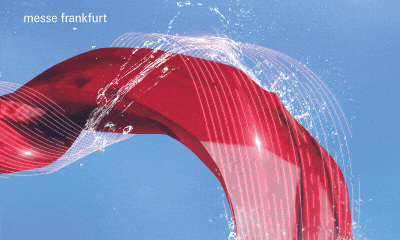 |
Hotel trading performance strong, but clouds gather (Australie)
|
Catégorie : Asie Pacifique - Australie - Économie du secteur
- Chiffres et études
Ceci est un communiqué de presse sélectionné par notre comité éditorial et publié gratuitement le mercredi 08 octobre 2008
Australia’s key hotel markets have largely maintained their growth momentum however the challenges arising from global financial turmoil will inevitably slow this going forward. The newly released Australian Bureau of Statistics (ABS) tourist accommodation data shows growth in trading performance came largely on the back of strong increases in Average Daily Rates (ADR) during the June quarter 2008.
“This latest available ABS data is encouraging but with worldwide uncertainty in global finance markets, many are asking what the immediate future holds for hotel trading performance,” said Mr Troy Craig, Executive Vice President, Jones Lang LaSalle Hotels.
Mr Craig added, “On a positive note, the Australian dollar will cease to be a block on inbound tourism and should partially offset the expected softness in domestic demand.”
A general lack of new supply in most markets around Australia should also help insulate certain markets from any significant downturn in hotel trading performance.
Based on the strong year-to-date June 2008 results but also taking into account anecdotal evidence of softening trading levels in the second half of 2008, Jones Lang LaSalle Hotels expects all capital cities to end the year with RevPAR growth ranging from 3% in Sydney and Brisbane to 16% in Perth. “The outlook for 2009 in the current environment is for RevPAR (Revenue Per Available Room) growth to slow noticeably in all markets,” said Mr Craig.
Out of all major Australian markets, Perth is likely to again lead the pack in 2009 to post solid RevPAR growth.
Hotel Trading Performance Highlights - June quarter 2008
• All major markets around Australia, except for the Queensland leisure markets of Cairns, Sunshine Coast and Gold Coast recorded growth in RevPAR in the June quarter 2008 with four markets recording double digit growth – Perth (32.2%), Canberra (25.5%), Melbourne (19.7%) and Darwin (15.3%).
• Perth recorded the highest occupancy amongst all markets for the June quarter at 82.3% and the highest occupancy growth of all ten markets (+7.7%). Perth continues to benefit from the ongoing high level of demand for Australia’s resources. Hotels in Perth also benefit from an acute shortage of hotel rooms and managed to increase ADR during the quarter by 22.7% - now placing the city third behind Sydney and Melbourne for having the highest ADR.
• With modest demand growth of 2.7%, hoteliers in Melbourne drove ADR higher by a very strong 16.1%. Coupled with very high occupancy levels, RevPAR growth was exceptional at 19.7%. During the year ended June 2008, Melbourne’s occupancy level reached 80.6%. This strong ADR growth suggests that hoteliers are driving room rates at a pace commensurate with such high occupancy levels.
• Sydney has continued on its steady path, performing well in an increasingly challenging environment. The market with the greatest exposure to the global financial turmoil, Sydney has posted solid ADR growth of 5.9%. Encouragingly, given that negative sentiment was taking hold in the June quarter occupancy levels also improved by 2.7% to 77.4%.
• Despite having the second highest level of demand growth amongst all major markets in Australia, Brisbane’s high occupancy levels retracted slightly to 78.7%. At the same time ADR growth continued at a healthy level of 7.2%.
• Adelaide continues to be the quiet achiever of Australia’s hotel markets thanks to improving corporate demand arising partially from mineral exploration projects throughout South Australia. The city posted ADR growth of 8.0% in the June quarter 2008 albeit at a marginally lower occupancy rate of 73.8%.
• Darwin has continued its strong run of the past four years and looks set to post its fifth year of strong RevPAR growth after a 15.3% uplift during the June quarter 2008. This strong uplift is a result of both strong corporate demand but also this June quarter benefiting from a trend of the widening shoulder period (seasonality). These positive results are expected to soften in 2009 as the city absorbs an uplift in new supply.
• Not surprisingly, the key leisure markets - being Gold Coast, Sunshine Coast and Cairns – saw declining occupancy levels in the quarter. These markets obviously have excess capacity issues with occupancy levels at around 60% to 70% during the year ended June 2008. This compares to the capital city markets that experienced occupancy levels in the mid-70% to low 80% range over the same period.
|
|







